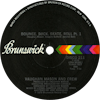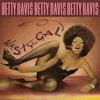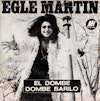Vaughan Mason may have been a genius. He readily admitted that he couldn’t sing or play an instrument to save his life. But he was incredibly smart and business savvy. In the summer of 1979, he was a recording engineer, and he worked in a record store as well. He had this idea that kept tugging at him. The problem was that he knew that what he wanted to do would be walking a very fine line legally as far as copyright laws went.
“There is nothing in copyright law that says that you can’t copy the feel of a record,” he told me in a phone interview. “It is against the law to copy a composition’s sound note for note without permission,” he told me, “but there is nothing that says you can’t copy a record’s feel. Musicians have been doing that for years.” Let’s note that the recent ruling against Pharrell and Robin Thicke for their Marvin Gaye soundalike “Blurred Lines” calls this previously held belief into question.
His idea was to copy the feel of the most popular song on the radio—in this case, it was Chic’s “Good Times.”
“Now, I can’t play music or write music,” he told me. So he took a piece of paper, a pencil, and a ruler and made grids up and down and across the sheet. On the left side of the sheet on the first line, he wrote “kick.” On the next line under it, he wrote “snare.” Under that one, he wrote “hi-hat,” and under that, he wrote “bass.” Then he played the song “Good Times” over and over and over and over again. He mapped the whole song out by putting dots on the grids, ending up with five pages of data.
Then he assembled the musicians. He had a drummer play just the kick to a metronome for about ten minutes. Then he recorded the snare. After that, the hi-hat. Although he never could remember which specific one it was, he knows they used a keyboard for the bass line. However, what he never forgot was the inspiration for the lyrics. The Wall Street Journal published an article about the popularity of roller skating: “Three hundred thousand roller skates have been sold,” the article read. It just so happened that the hottest craze at the time was roller disco. “That’s it!” Mason said. “A song about roller disco.” Nice idea so far, but it was kind of strange coming from a guy who couldn’t skate. But that didn’t matter, because there was only one more element he needed. It came to him at a party.
“The most popular dance back then was called the Rock,” he told me. “It was the laziest dance ever. You didn’t need to have any rhythm to do the Rock. I used to see white people out in the middle of the floor doing the Rock—it was that damn easy.”
With all elements in place, he recruited the musicians, among them a singer named Jerome Bell. While Mason was producing the tracks, he enlisted Bell to write the song’s lyrics. Forty years later, “Bounce, Rock, Skate, Roll” is still a skater’s anthem.


